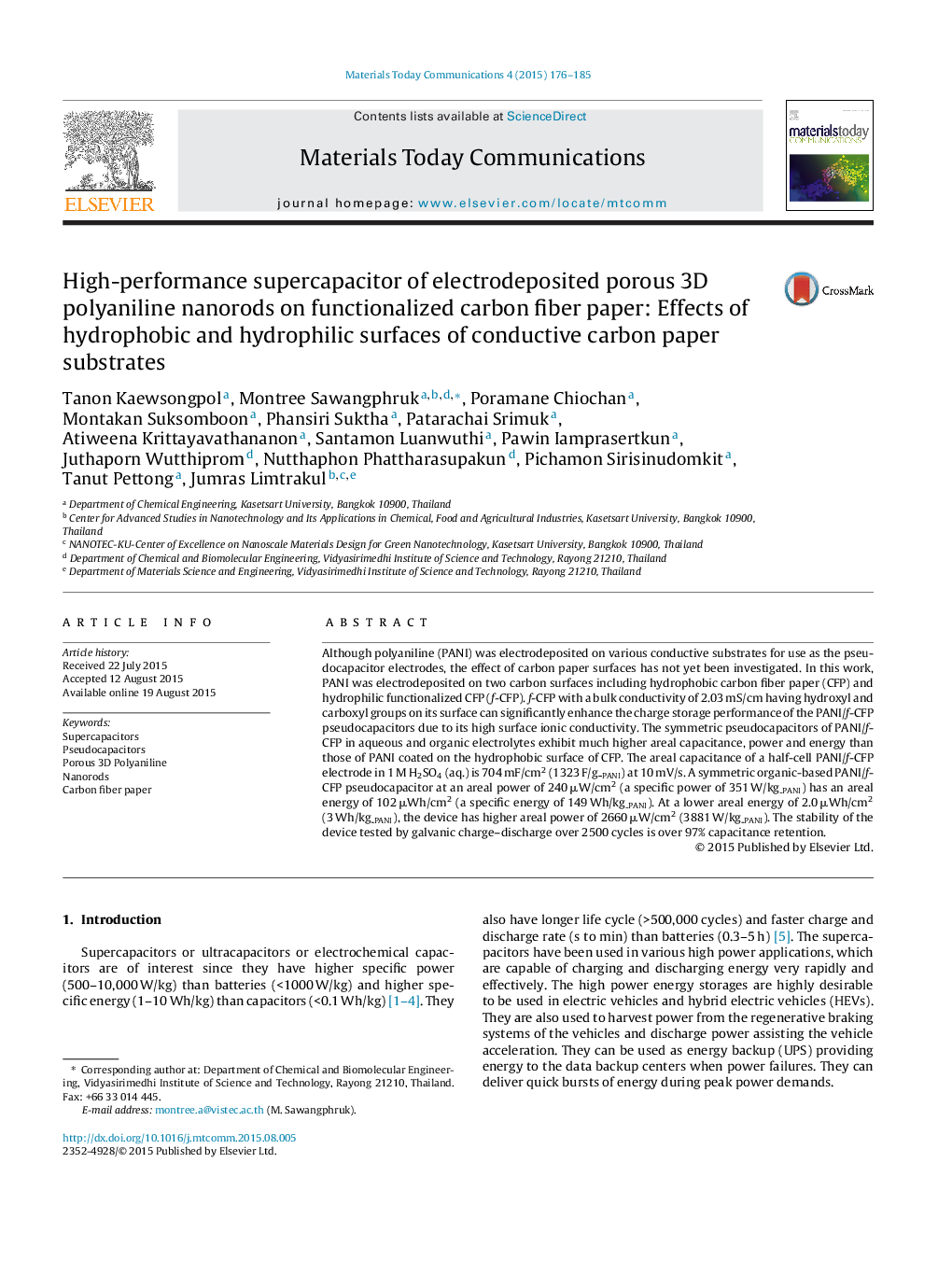| Article ID | Journal | Published Year | Pages | File Type |
|---|---|---|---|---|
| 1586265 | Materials Today Communications | 2015 | 10 Pages |
Although polyaniline (PANI) was electrodeposited on various conductive substrates for use as the pseudocapacitor electrodes, the effect of carbon paper surfaces has not yet been investigated. In this work, PANI was electrodeposited on two carbon surfaces including hydrophobic carbon fiber paper (CFP) and hydrophilic functionalized CFP (f-CFP). f-CFP with a bulk conductivity of 2.03 mS/cm having hydroxyl and carboxyl groups on its surface can significantly enhance the charge storage performance of the PANI/f-CFP pseudocapacitors due to its high surface ionic conductivity. The symmetric pseudocapacitors of PANI/f-CFP in aqueous and organic electrolytes exhibit much higher areal capacitance, power and energy than those of PANI coated on the hydrophobic surface of CFP. The areal capacitance of a half-cell PANI/f-CFP electrode in 1 M H2SO4 (aq.) is 704 mF/cm2 (1323 F/g_PANI) at 10 mV/s. A symmetric organic-based PANI/f-CFP pseudocapacitor at an areal power of 240 μW/cm2 (a specific power of 351 W/kg_PANI) has an areal energy of 102 μWh/cm2 (a specific energy of 149 Wh/kg_PANI). At a lower areal energy of 2.0 μWh/cm2 (3 Wh/kg_PANI), the device has higher areal power of 2660 μW/cm2 (3881 W/kg_PANI). The stability of the device tested by galvanic charge–discharge over 2500 cycles is over 97% capacitance retention.
Graphical abstractFigure optionsDownload full-size imageDownload as PowerPoint slide
